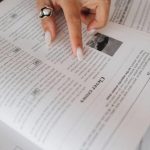
Area of a Circle Worksheet PDF: A Comprehensive Guide
Delve into the world of circles with our comprehensive guide to area worksheets! These PDFs provide a structured approach to mastering circle area calculations. They cater to diverse skill levels, with options for radius, diameter, and word problems. They contain examples, step-by-step instructions, and plenty of practice.
Understanding the Area of a Circle Formula
Understanding the area of a circle formula is fundamental to solving geometry problems. The area, which is the measure of the space enclosed within the circle, depends entirely on the circle’s radius. The formula provides a direct method for calculating this area. It connects a fundamental property of circles to a single, easily measured dimension. Students can grasp the concept of area by visualizing the circle as being filled with infinitely small squares;
Mastering the formula opens doors to solving various practical and theoretical problems. It’s not merely about memorization. Understanding the formula also helps in deriving related geometric principles and solving more complex problems. Knowing how to manipulate the formula is essential for advanced applications. The area formula is the basis for many geometry-related fields and has real-world applications.
Worksheets provide structured practice to reinforce this understanding.
The Formula: A = πr²
The formula for the area of a circle is elegantly simple: A = πr². This equation states that the area (A) is equal to pi (π) multiplied by the square of the radius (r). Pi (π) is a constant approximately equal to 3.14159. It represents the ratio of a circle’s circumference to its diameter. The radius (r) is the distance from the center of the circle to any point on its edge. Squaring the radius means multiplying it by itself (r * r).
The formula essentially tells us how much space the circle occupies in two dimensions. It also provides a direct method to calculate the area if we know the radius. Understanding this formula is crucial for solving various problems. It’s a cornerstone concept in geometry and many fields involving circular shapes. Worksheets provide a structured approach to practicing this formula. They help students apply the formula in various contexts.
Consistent practice reinforces the understanding of the formula and its practical applications.
Calculating Area with Radius
Calculating the area of a circle when given the radius is a straightforward application of the formula A = πr². The radius, as a reminder, is the distance from the circle’s center to any point on its circumference. To find the area, first, square the radius. This means multiplying the radius by itself. Next, multiply the result by π (approximately 3.14159). This final value is the area of the circle.
For example, if a circle has a radius of 5 cm, square it to get 25 cm². Then, multiply 25 cm² by π to get approximately 78.54 cm². Worksheets often provide various radius values, allowing students to practice this calculation. They reinforce the understanding of the relationship between the radius and the area.
Consistent practice with different radius values helps students become comfortable with the formula. It improves their ability to quickly and accurately calculate the area of a circle. Remember to always include the appropriate units (e.g., cm², m², in²) when expressing the area.
Calculating Area with Diameter
When calculating the area of a circle using its diameter, we need to remember that the diameter is twice the length of the radius. The formula for the area of a circle still relies on the radius (A = πr²). Therefore, the first step is to determine the radius from the given diameter. To do this, simply divide the diameter by 2 (radius = diameter / 2).
Once you have the radius, you can proceed with the area calculation as before. Square the radius (multiply it by itself), and then multiply the result by π (approximately 3.14159). This will give you the area of the circle.
For instance, if a circle has a diameter of 10 meters, its radius would be 5 meters (10 / 2 = 5). Squaring the radius gives 25 m². Multiplying this by π gives approximately 78.54 m². Area of a circle worksheets often include problems that provide the diameter, requiring students to first calculate the radius before finding the area. This reinforces the understanding of the relationship between diameter and radius. It also provides additional steps in applying the area formula. Regular practice will improve proficiency in handling diameter-based calculations.
Area of a Circle: Example Problems and Solutions
Let’s explore some example problems to solidify our understanding of calculating the area of a circle. These problems cover various scenarios, from simple radius-based calculations to word problems that require a bit more thought. Each problem is accompanied by a detailed solution to guide you through the process.
Example 1: A circle has a radius of 7 cm. Find its area.
Solution: Using the formula A = πr², we substitute r = 7 cm. A = π * (7 cm)² = π * 49 cm² ≈ 153.94 cm².
Example 2: The diameter of a circle is 12 meters. Calculate its area.
Solution: First, find the radius: radius = diameter / 2 = 12 m / 2 = 6 m. Then, use the area formula: A = π * (6 m)² = π * 36 m² ≈ 113.10 m².
Example 3: A circular garden has a radius of 4 meters. How much space does the garden cover?
Solution: This is a direct application of the area formula: A = π * (4 m)² = π * 16 m² ≈ 50.27 m².
These examples demonstrate how to apply the area formula in different situations. Area of a circle worksheets often provide a range of problems with varying levels of complexity. They are for solidifying these skills.
Simple Problems with Given Radius

Let’s begin with the basics: calculating the area of a circle when the radius is directly provided. These problems are designed to reinforce the fundamental area formula, A = πr², where ‘A’ represents the area, ‘π’ (pi) is a mathematical constant approximately equal to 3.14159, and ‘r’ is the radius of the circle. Solving these types of problems is a crucial first step in mastering circle area calculations.
Example: Find the area of a circle with a radius of 5 cm.
Solution:
- Identify the radius: r = 5 cm.
- Apply the formula: A = πr² = π * (5 cm)².
- Calculate the square of the radius: (5 cm)² = 25 cm².
- Multiply by π: A = π * 25 cm² ≈ 78.54 cm².
Therefore, the area of the circle is approximately 78.54 square centimeters. These simple problems are building blocks for more complex calculations involving the area of a circle. Worksheets will provide a variety of radius values for such practice, ensuring a solid foundation in this essential geometric concept.
Word Problems Involving Area of a Circle
Now, let’s take our understanding of the area of a circle a step further by tackling word problems! These problems present real-world scenarios where calculating the area of a circle is essential. They require not only knowing the formula A = πr² but also the ability to interpret the problem, identify the relevant information (usually the radius or diameter), and apply the formula correctly to find the solution.

Word problems help us understand how geometric concepts are applied in everyday situations. For example, calculating the area of a circular pizza, determining the size of a circular garden, or figuring out the amount of material needed to cover a circular table.
Example: A circular garden has a diameter of 10 meters. What is the area of the garden?
Solution:
- Find the radius: radius = diameter / 2 = 10 meters / 2 = 5 meters.
- Apply the formula: A = πr² = π * (5 meters)².
- Calculate: A ≈ 3.14159 * 25 square meters ≈ 78.54 square meters.
Therefore, the area of the garden is approximately 78.54 square meters.
Advanced Applications: Finding Radius from Area
Let’s explore a more challenging application of the area of a circle: finding the radius when the area is known. This requires a bit of algebraic manipulation of the formula A = πr². Instead of directly calculating the area, we’re working backward to find the radius. This skill is incredibly useful in various fields, from engineering to design, where you might know the desired area but need to determine the corresponding radius.
To find the radius from the area, we rearrange the formula:
A = πr²
r² = A / π
r = √(A / π)
So, the radius is equal to the square root of the area divided by pi.
Example: A circle has an area of 154 square centimeters. Find the radius of the circle.
Solution:
- Apply the formula: r = √(A / π) = √(154 cm² / π).
- Calculate: r ≈ √(154 cm² / 3.14159) ≈ √(49.0197 cm²) ≈ 7.00 cm.
Therefore, the radius of the circle is approximately 7 centimeters.
Using Area to Calculate Circumference
Another advanced application involves using the area of a circle to determine its circumference. This requires combining the area formula (A = πr²) with the circumference formula (C = 2πr). Since we can find the radius from the area, we can then use that radius to calculate the circumference. This approach is useful when the radius isn’t directly given, but the area is known; It demonstrates a deeper understanding of the relationship between these fundamental properties of a circle.
Steps:
- Find the radius from the area: r = √(A / π)
- Use the radius to calculate the circumference: C = 2πr
Example: A circle has an area of 201.06 square inches. What is its circumference?
Solution:
- First, find the radius: r = √(201.06 in² / π) ≈ √(64.00 in²) ≈ 8 inches.
- Then, calculate the circumference: C = 2πr = 2 * π * 8 inches ≈ 50.27 inches.
Therefore, the circumference of the circle is approximately 50.27 inches. This exercise highlights how different formulas in geometry can be interconnected.
Area of an Annulus (Ring)
An annulus, also known as a ring, is the region between two concentric circles (circles that share the same center). To find the area of an annulus, you need to calculate the area of the larger circle and subtract the area of the smaller circle. This concept builds upon the basic area of a circle formula and introduces a slightly more complex application.
Formula:
A = πR² ⏤ πr² or A = π(R² ‒ r²)
Where:

- R is the radius of the outer circle.
- r is the radius of the inner circle.
- A is the area of the annulus.
Steps:
- Find the radius of both the larger (R) and smaller (r) circles.
- Calculate the area of the larger circle: πR².
- Calculate the area of the smaller circle: πr².
- Subtract the area of the smaller circle from the area of the larger circle.
Example: An annulus has an outer radius of 10 cm and an inner radius of 6 cm. Find its area.
A = π(10² ‒ 6²) = π(100 ⏤ 36) = π(64) ≈ 201.06 cm²
Therefore, the area of the annulus is approximately 201.06 square centimeters.
Worksheet Resources and Types
A variety of resources offer area of a circle worksheets in PDF format, catering to different learning styles and skill levels. These worksheets are designed to reinforce understanding of the formula A = πr² and its application in solving problems.
Types of Worksheets:
- Basic Radius/Diameter Problems: These worksheets provide the radius or diameter of a circle and ask students to calculate the area.
- Word Problems: These worksheets present real-world scenarios where students need to apply the area formula to solve practical problems.
- Finding Radius from Area: These worksheets challenge students to work backward, using the area to determine the radius of the circle.
- Area of an Annulus: These worksheets focus on finding the area between two concentric circles.
- Mixed Review: These worksheets combine various types of problems to provide a comprehensive review of the area of a circle concept.
Resources:
- Educational Websites: Many websites offer free, printable math worksheets, including those focused on the area of a circle.
- Teacher Resource Sites: Platforms like Teachers Pay Teachers provide a wide range of paid and free worksheets created by educators.
- Textbooks and Workbooks: Math textbooks and workbooks often include area of a circle worksheets as part of their geometry sections.
Printable Worksheets for Practice
Printable worksheets are an invaluable tool for reinforcing the concept of calculating the area of a circle. These resources offer a tangible and structured way for students to practice applying the formula A = πr² and develop their problem-solving skills.
Benefits of Printable Worksheets:
- Tangible Practice: Students can physically write on the worksheets, which helps with engagement and retention.
- Structured Learning: Worksheets provide a clear and organized format for practicing problems, with space for calculations and answers.
- Variety of Problems: Worksheets can include a range of problem types, from basic calculations to more complex word problems.
- Accessibility: Printable worksheets are readily available online and can be easily accessed and printed for classroom or home use.
- Assessment Tool: Worksheets can be used as a formative assessment tool to gauge student understanding and identify areas needing improvement.

Tips for Using Printable Worksheets:
- Start with basic problems and gradually increase the difficulty.
- Encourage students to show their work and explain their reasoning.
- Provide feedback and guidance to help students learn from their mistakes.
- Use worksheets as part of a broader lesson plan that includes instruction, examples, and real-world applications.
Online Interactive Worksheets
Online interactive worksheets provide a dynamic and engaging alternative to traditional paper-based exercises for learning about the area of a circle. These digital resources offer immediate feedback, interactive elements, and often incorporate gamification to enhance the learning experience.
Benefits of Online Interactive Worksheets:
- Immediate Feedback: Students receive instant feedback on their answers, allowing them to correct mistakes and learn from them in real-time.
- Interactive Elements: Interactive worksheets may include drag-and-drop activities, virtual manipulatives, and animations to make learning more engaging.
- Gamification: Some online worksheets incorporate game-like elements, such as points, badges, and leaderboards, to motivate students and make learning fun.
- Accessibility: Online worksheets can be accessed from any device with an internet connection, making them convenient for both in-class and at-home learning.
- Data Tracking: Many online platforms track student progress and provide teachers with data on student performance, allowing them to identify areas where students may need additional support.
Tips for Using Online Interactive Worksheets:
- Choose worksheets that are appropriate for the student’s skill level.
- Encourage students to explore the interactive features of the worksheet.
- Provide guidance and support as needed.
- Use online worksheets as part of a blended learning approach that combines online and offline activities.




